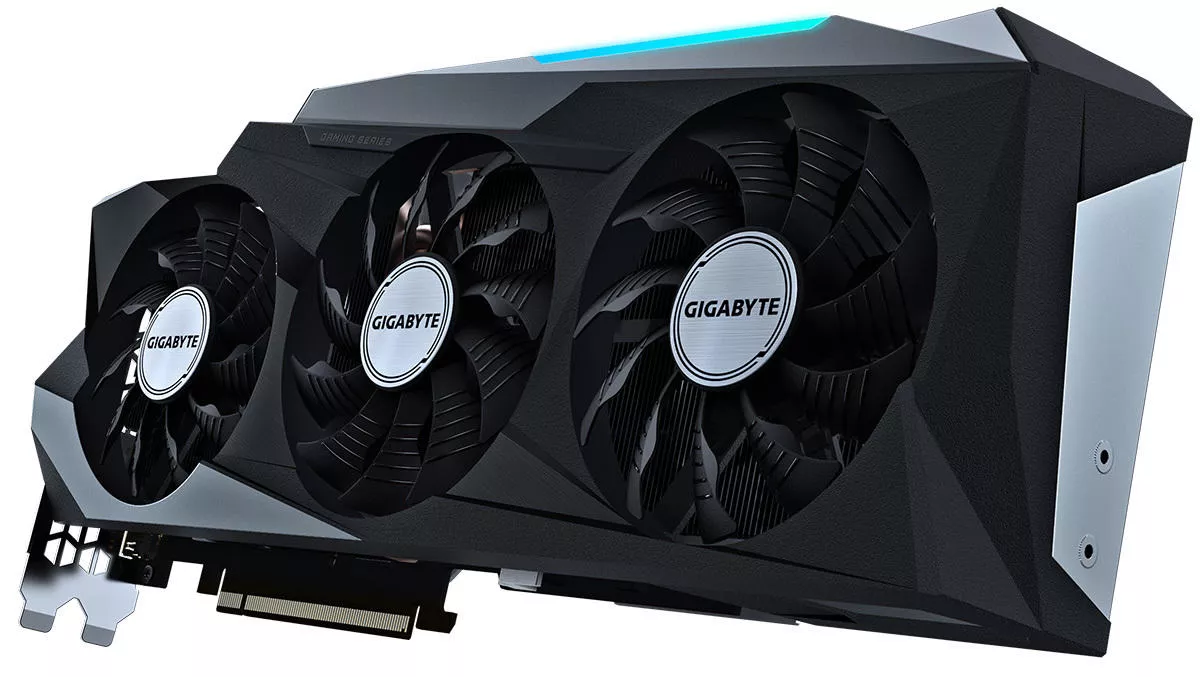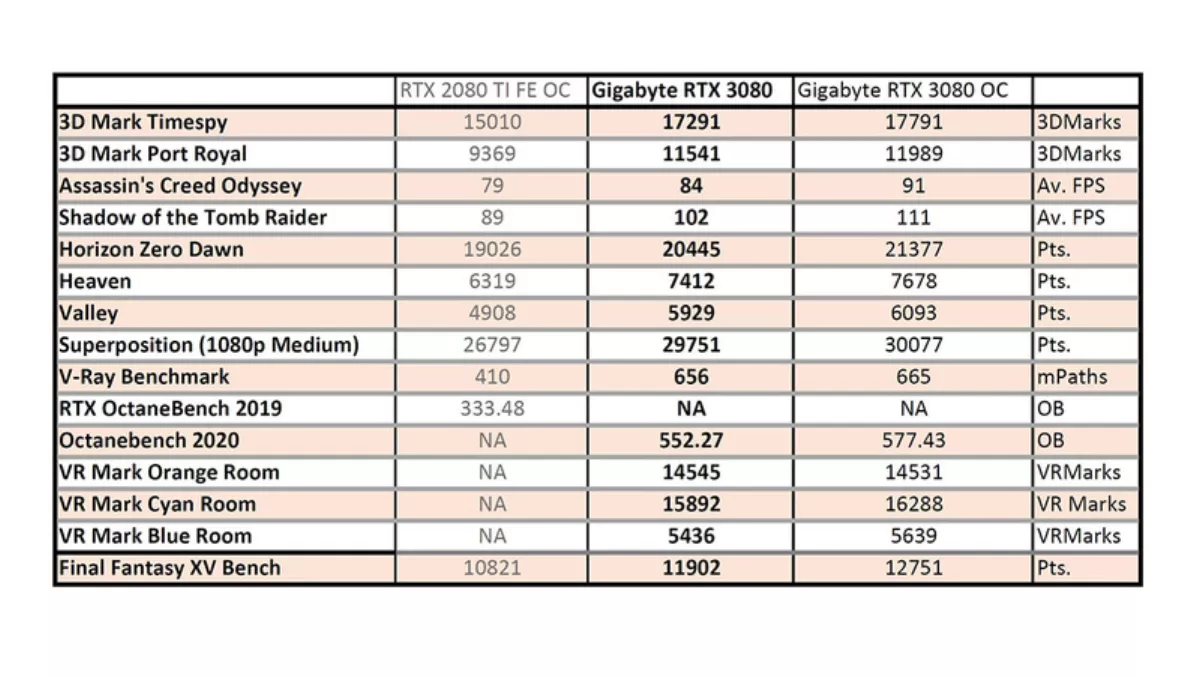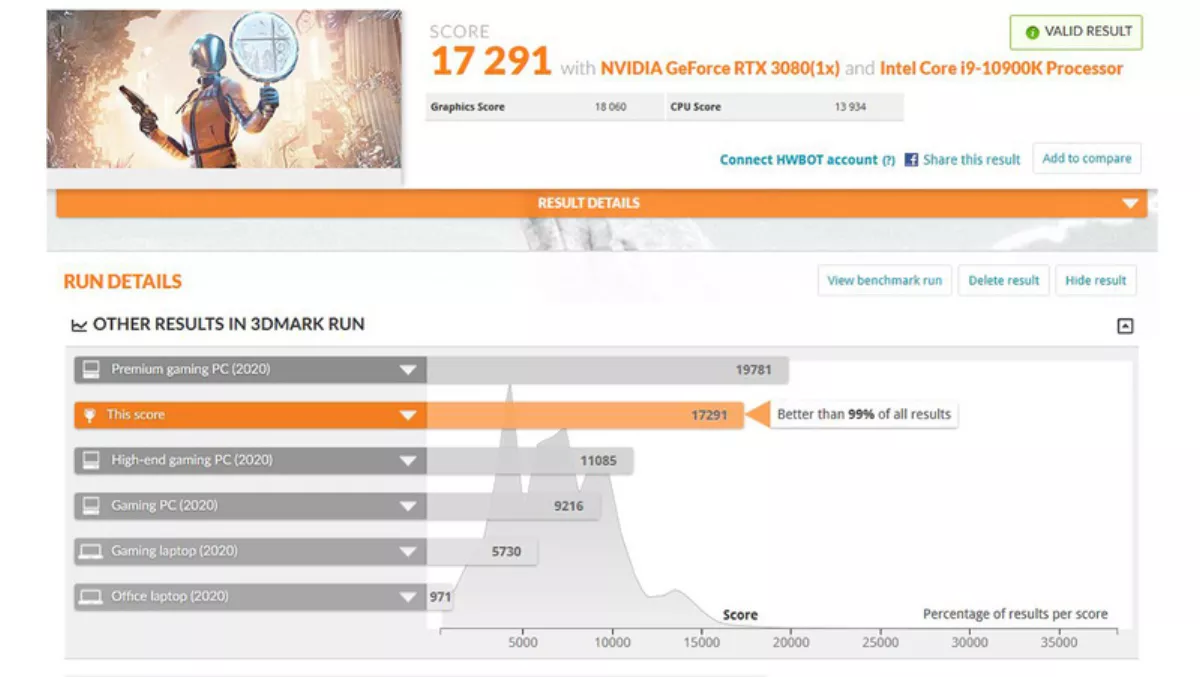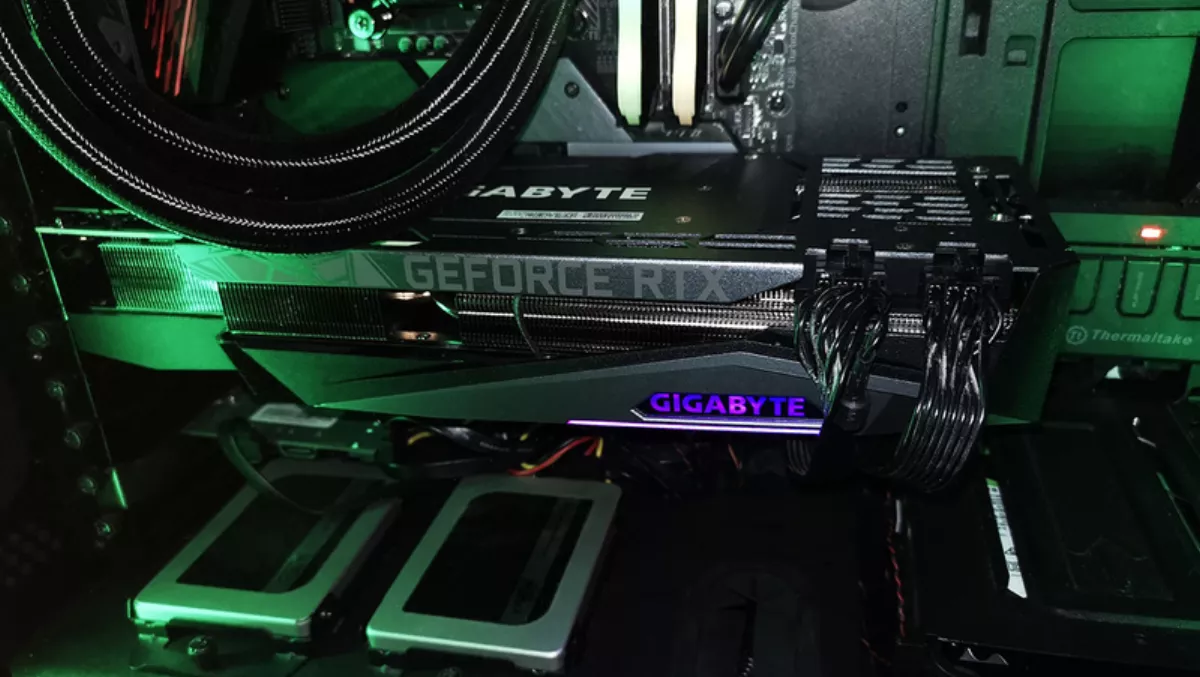
Hands-on review: Gigabyte RTX 3080 Gaming OC 10G graphics card
Announced to much aplomb by NVIDIA president and CEO Jensen Huang from his kitchen back in September, the RTX 30XX cards have been very difficult to obtain since their launch. After weeks of waiting, we've finally got our hands on one of Nvidia's coveted RTX 3080 cards, the Gigabyte RTX 3080 Gaming OC 10G.
The first thing that strikes you is just how huge these cards are. As with all these 3080 GPUs, you need to ensure it that it will fit in your case.
The Gigabyte RTX 3080 Gaming OC 10G card has three Windforce fans- 2x 90cm and 1x 80cm rotating in alternate directions, copper heat transfer plate and copper heat pipes. The card has a backplate covering the electronics and giving it a bit of extra strength. Unlike the Nvidia Founders Edition cards, the Gigabyte RTX 3080 only needs two regular 8-pin PCIe power supply connectors.
The back of the card has 3x DisplayPort and 2x HDMI, ditching the USB-C that my RTX 2080 Ti had. The card uses Gigabyte's RGB Fusion 2.0 to power 16.7 customisable RGB options for the lighting effects.
Nvidia's Ampere architecture features the 2nd-generation of their RT cores, for real-time ray-tracing, and the 3rd generation of their AI Tensor cores. This should see some improvements in ray-tracing and the use of deep learning anti-aliasing for better-looking visuals and frame rates.
The card's factory overclock raises the core clock from the 1710MHz of the reference cards to 1800MHz, with the memory clocked at a stock of 1188 MHz, with an effective frequency of 19000 MHz. The card can be switched from this default overclock to silent mode reducing performance but lowering the fan speed.
That's all very well, but I've been overclocking my RTX 2080 Ti for ages using MSI's cheeky Afterburner software. Nvidia's RTX cards can utilise Nvidia's OC Scanner feature to automatically overclock the core frequency. Afterburner utilises this software too, with one click, test the card's performance against heat and voltage and tune the individual card based on its unique ability. This saves manually cranking up the frequency bit by bit. You could probably squeeze a bit more out of a manual overclock, but this way is a lot less laborious.
You can see below for some comparisons between my old 2080 Ti FE overclock results and the RTX 3080 at both the factory and additional Afterburner overclock. For the most part, the games are running at their ultra settings or thereabouts, all at 2560x1440.

The 3D Mark Timespy result sees a definite boost from the 2080 Ti score. The Port Royal score, which benchmarks the unique RTX ray-tracing abilities also sees the biggest boost. Assassin's Creed Odyssey, a DirectX 11 game, doesn't really see much of an improvement. Shadow of the Tomb Raider, which is a Direct X 12 game, with ray-traced shadows breaches 100fps at the factory overclock. All the game benchmarks yield a similar 10% improvement over the RTX 2080 Ti. Being mindful that is from a card costing ¾ the original asking price of the 2080 Ti.

The GPU rendering benchmarks yielded better results. The RTX 3080 had significant gains over with both the V-Ray and OctaneBench results (I had to switch to OctaneBench 2020 as OctaneBench 2019 does not support the 30xx-series GPUs).
I tested the Gigabyte RTX 3080 with an HTC Vive Cosmos, with the tracking mod. Whilst the experience was smooth, some technical difficulties meant that I couldn't really gauge how much of an improvement the card gave really gave me. Out of curiosity, I ran VRMark for some theoretical VR test results. The VR results were vastly superior to those of a 2020 high-end gaming PC.
Afterburner managed to boost the Gigabyte RTX 3080 core frequency to a max of just over 2000MHz and add 200MHz to the memory clock. Whilst this is most definitely a gain, there's a bit more fan noise to keep the temps down. The overclock does, for the most part, give it an extra boost netting a few more frames-per-second (not sure what happened with the Orange Room score).
Away from the benchmarking, the likes of Assassin's Creed Odyssey, a Direct X 11 game, ran at 4K/HDR at my TV's 60 fps with all the settings maxed out- which is a massive success.
Control, a proper DX12 RTX-enabled game, ran at 60 fps at 2560x1440 resolution and got up to the 90s when I switched on DLSS, again, not bad at all. The 2080 Ti would be lucky to get 40 fps.
Kingdom Come: Deliverance, which uses Crytek's aging and so-so optimised CryEngine, topped at 115fps on my G-Sych-enabled 1440 monitor. Codemasters' GRID, maxed out, raced along at the full 144fps, the limit of my monitor's capabilities, which was very nice.
Microsoft Flight Simulator, which is a very complex game, really pushing its dated Direct X 11 engine, is the unfortunate exception. Even in spite of the 3080's power, I couldn't really get more than 60fps out of the game.
Call of Duty Modern Warfare, max settings, at 2560x1440 netted me 140fps, dropping to a still impressive 80-90fps in 4K. I think we need to thank DLSS for that. Another surprise was Marvels Avengers, giving me 144fps at 1440 and 92fps at 4K!
The RTX 3080, even at the factory speeds puts uncompromising 4K 60fps gameplay in the reach of PC gamers. Some games still need a few tweaks- reducing the anti-aliasing, virtually redundant at 4K, anyway, for example, in order to consistently hit 60fps. At 2560x1440, most modern games hit between 100-144 (my monitor's top), with FIFA 21 knocking the ball out of the park with 144fps even at 4K.
The RTX 3080 likes being worked. If you've got a 1920x1080 display, stick with an RTX 2080. At 2560x1440 the GPU starts to wind up. Direct X 11 games seem to get a little less out of the cards, but DX 12 games really seem to benefit. Games optimised for Nvidia's ray-tracing and deep-learning super-sampling really get a boost from the 2nd generation RT cores and the 3rd generation Tensor Cores. 4K really lets the card shine giving up 60fps pretty much across the board. I still feel, as a PC gamer, that the real benefit of the RTX 3080 is with 2560x1440 displays and the high fps you can easily get with the card.
Gigabyte's RTX 3080 Gaming OC 10G is a great example of Nvidia's next generation of RTX GPUs. The fans are effective and do their job relatively quietly (at factory OC), but get a bit nosier when overclocked further. The unit is well-built and the metal backplate makes the whole thing feel really robust. The card's unquestionable performance makes it a very desirable solution for the more discerning PC gamer.



